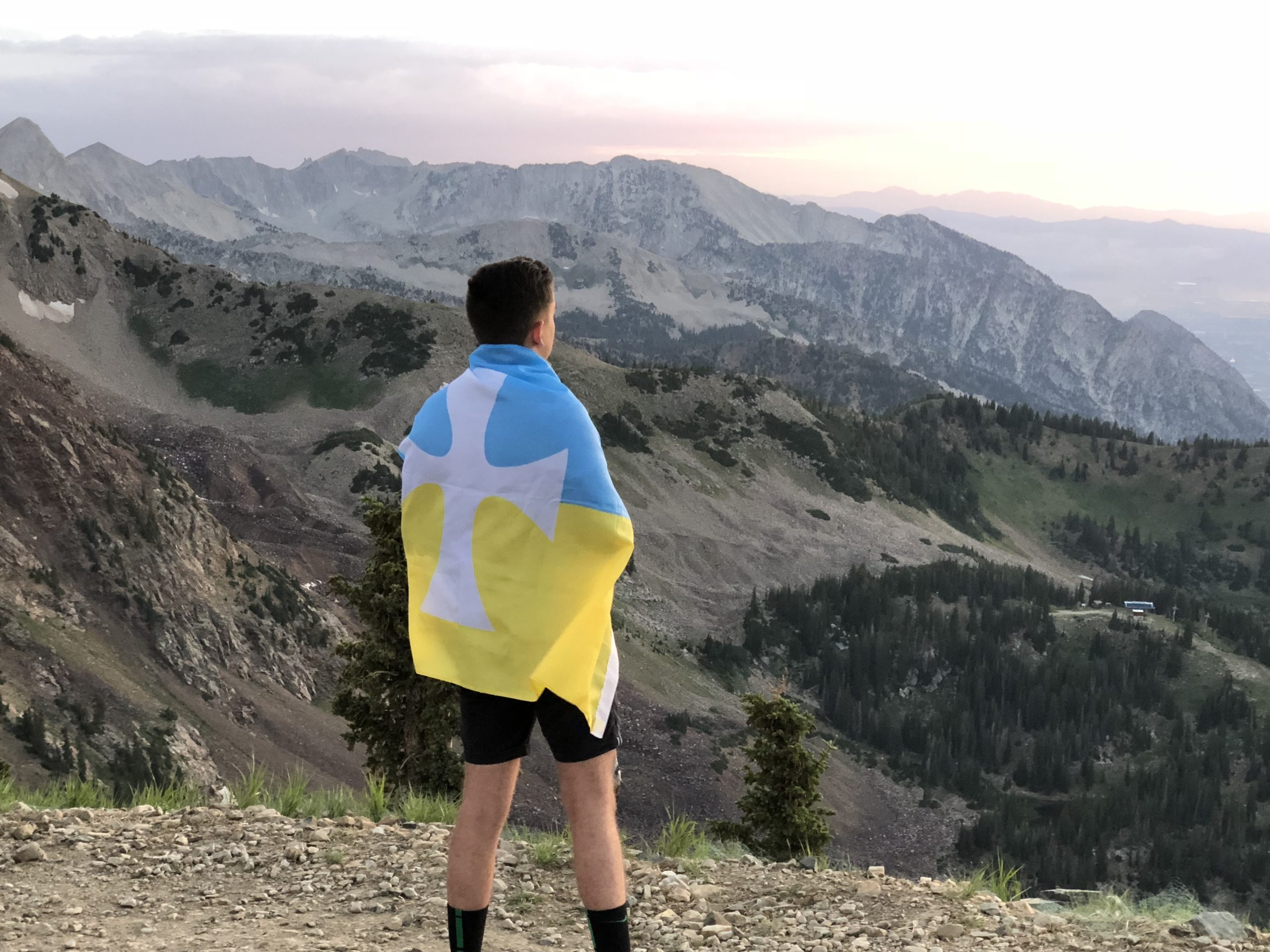
BY ASHLEY SZATALA
Burks, FURMAN 1989, discusses his approaches to leadership after more than 26 years in the Air Force and decades leading health care teams.
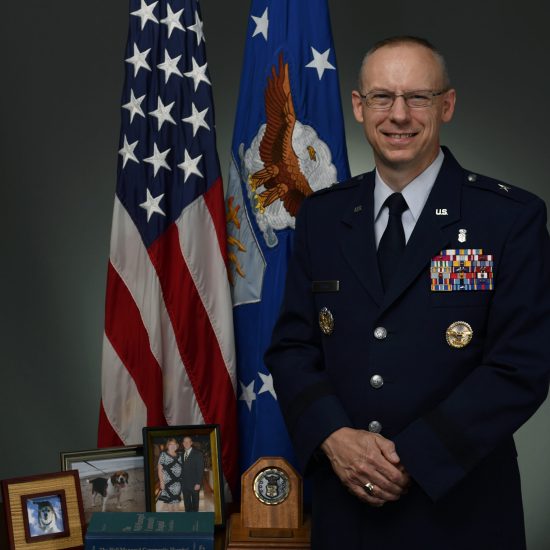
Transformational leadership is the practice by which leaders inspire and empower others to innovate and create change that will positively impact the Fraternity and ultimately the world. The transformational leader first must learn to manage self before being able to lead others and cultivate action within their community and campus.
A mainstay in the life of Significant Sig and Brig. Gen. Jay Burks, FURMAN 1989, has been values-based leadership. It’s what first drew him to Sigma Chi as an undergraduate student. It’s what made a career in the U.S. Air Force appealing. And, it’s been the guidepost for which he’s led by and encouraged others throughout his career, which has included serving as the Air Force Surgeon General’s senior health care administrator and chief of resources, strategy and talent management; vice president and chief operating officer for a Virginia not-for-profit health system; and administrator and vice commander of a field operating agency. Burks details below his approach to leadership, what it was like being a founding father of his chapter and his advice for empowering others.
YOU JOINED THE AIR FORCE IN 1992 AND RETIRED IN 2018 WITH THE RANK OF BRIGADIER GENERAL. WHAT INSPIRED YOU TO JOIN THE AIR FORCE?
When I finished undergrad, my parents gave me one of those no-brainer, good deals, which was if you continue on with graduate school, and do graduate school at the University of South Carolina, which is where my dad had his degree, then they will continue to pay for it. So, I went directly from undergraduate [schooling] into an MBA program.
When I finished graduate school, a couple of things happened around that time. One was the Gulf War. Iraq invaded Kuwait. On Aug. 1, 1990, [my wife and I] were actually in the airport returning from our honeymoon on that day, and we saw CNN showing the Iraqi tanks rolling into Kuwait [on Aug. 2, 1990, local time]. About that time as well, the economy was in recession. Jobs just weren’t as plenty.
When I graduated in ’91, I was looking at different management and leadership opportunities and coming out with a couple of degrees and not much else. With the inspiration of some mentors who had served in the Air Force, I wandered into an Air Force recruiter’s office in Columbia, South Carolina, and became aware of the opportunity to apply for a commission as a medical service corps officer to meet the officer candidate selection board. [My wife] Valarie and I talked about it. We were looking for that first real world opportunity, and we wanted to get out and see the world. We knew it was initially a three-year commitment. I applied to the board and was very fortunate to be selected. Frankly, what the Air Force offered as far as leadership development and really getting some of that experience that I was looking for was far better than anything I was finding in the private sector.
Off we went in January ’92 to officer training and then onto our first assignment, which was at McConnell Air Force Base in Wichita, Kansas. Twenty-six and a half years later, we look around and say, “Well, that went by fast.”
HOW WOULD YOU DESCRIBE YOUR LEADERSHIP STYLE, AND HOW HAS YOUR MILITARY EXPERIENCE INFLUENCED IT?
I think there are a number of dimensions of leadership. The first is self-leadership, which is about self-discipline. And it’s about continuously improving yourself. Then there’s the leading of others. And that really gets to what I think is the most foundational principle I believe, and that is leadership is about others.
We were at Scott Air Force Base in Illinois. I was a major at the time working for a colonel who to this day I consider a dear personal friend, Col. Dave Womack. I was preparing to go off to our [fifth] assignment, and in my exit interview, I said, “So sir, what’s the one bit of advice that you would give me as I prepare to go on to the next phase of my Air Force career?” Dave Womack thought about it. He said, “You know, Jay, just remember leadership is not about the leader. It’s about those who are led.” And that’s resonated with me. Leadership is not about a rank, title or position. You can lead from anywhere, and you can lead from any position.
In my private sector experience, I was in a regional not-for-profit health system. We were in a meeting one day with human resources. They were talking about how we need to invite the leaders to a certain set of venues that we were going to put on. I raised my hand and said, “Can you define leaders?” And they said, ‘Well, sure, everybody at the level of director and above within the organization,” so director, managing director, vice president, senior vice president, senior executive and so forth. That’s a management construct. I wasn’t trying to be difficult, but I said, “Those are managerial positions.” Sometimes people equate sitting in any one of those positions as, “I am a leader. I am in charge.” And certainly, those positions come with responsibilities inherent to the position.
But somebody who works at the very furthest frontline of an operation who might have no supervisory responsibilities can be a leader just based on how she or he or they go about their work and how they focus on taking care of others and the values that they bring to the organization. So, I don’t think leadership is about rank, title or position. It’s really how we relate to others. And then we direct our energies toward shared goals in the organization. So that’s my style, if you will.
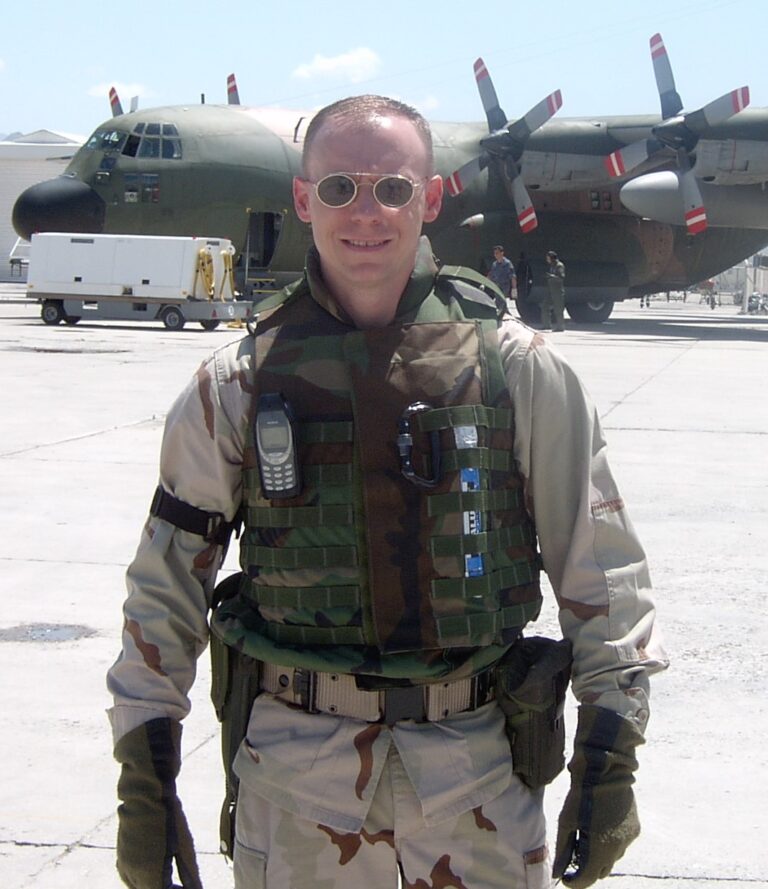
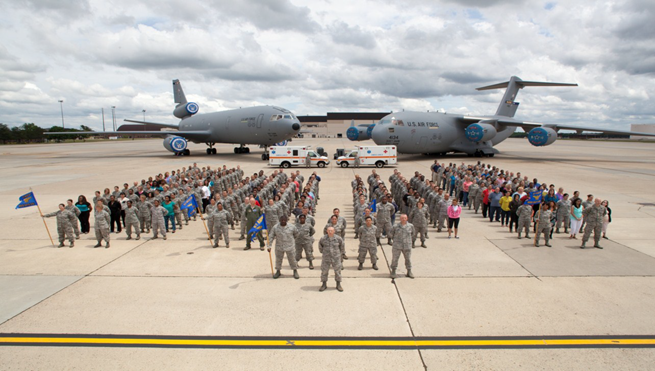
Jay Burks Quick Facts:
THROUGHOUT YOUR CAREER YOU HAVE BEEN RESPONSIBLE FOR BUILDING AND SUSTAINING HIGH-PERFORMING TEAMS. ANY ADVICE FOR DOING SO, ESPECIALLY ACROSS DEPARTMENTS OR DISCIPLINES?
Sometimes as a leader you get to select your team, and sometimes you play the cards you’re dealt. The first thing that has to come is self-awareness. I’ve seen folks come in, and it’s like, “OK, I’m here to save the day,” and just start making decisions or rearranging things. I’m not going to criticize that, but that’s not been my approach. I think when you come into a situation [of building a high-performing team], you size up what the strengths are of the individuals on the team, what the weaknesses are, and you do a lot of listening early on.
I can think of a time when I went into a medical group command role in the Air Force, so command of a medical facility. The first thing I want to do is understand the strengths of the team and the perspectives of the team. It was a fairly junior leadership team, and it was also a team that was selected by my predecessor. So, I was playing the hand that that I was dealt. I came in with a sense about what we needed to focus on. That was shaped by past experience and my understanding of the current environment. I also got to know my boss’s expectations to make sure that I was meeting her expectations for what she wanted her medical facility to be doing.
Then we laid out our plan as a team, and there’s a lot of coaching that goes along with it. I think part of building a high-performing team is not telling someone you’re going to do this or that. The effective way to do it is kind of guide folks along in their own self-discovery, give them a little bit of, as we say, vector as they as they move along. Really spend time listening. Understand the situation, understand your people.
Every now and then you have to make what some would call the tough decision to remove somebody from a position. We set expectations, and we manage to those expectations. Setting expectations is part of leadership, and then holding yourself and others accountable to those expectations.
When I was general officer, we did some research on senior executives within Air Force medicine who had been fired or removed from their positions. And invariably it came down to what I would term as moral issues. But at the same time, you can’t let them slide because you promote what you permit. So, part of staying hired is doing those things that are focused on our core values.
When there’s somebody who’s not performing at a high level, it’s not necessarily because they are a bad person. It’s not because they’re not competent. There just might be a mismatch between their knowledge, skills and abilities, aspirations, and what the organization is asking me to do. Is it the right fit for this person at this time, based on what they’re good at doing and what we know they want to do, and how they want to contribute? Or are we putting them in a position where we might be having one of those difficult conversations on the back end for a decision that we made on front end? I think that’s part of building and sustaining a high performing team as well. It goes back to getting to know your folks.
"I think part of building a high-performing team is not telling someone you're going to do this or that. The effective way to do it is kind of guide folks along in their own self-discovery, give them a little bit of, as we say, vector as they as they move along. Really spend time listening. Understand the situation, understand your people."
~Significant Sig and Brig. Gen. Jay Burks, FURMAN 1989
WHAT IS A LESSON THAT YOU LEARNED EARLY IN YOUR CAREER ABOUT LEADERSHIP THAT HAS STUCK WITH YOU?
That’s about accountability and a leader’s accountability. When things go well, people are very quick to raise their hand and take credit. When things go badly, you’ve got to raise your hand as well. So, whether you achieve the intended outcome or you don’t, you have to be accountable for what’s happened. I can think of one situation in particular all the way back to my lieutenant days that was a personnel human resource issue regarding organizational climate.
As a young officer, I didn’t act as quickly and decisively in addressing the issue as I subsequently acted. I kind of let something fester longer than I should have. In talking to my immediate supervisor and talking to my commander, I acknowledged this was the situation that occurred. And, I didn’t address it the way that I should. I learned from that, of course. I was expecting for the commander to come down with the hammer for my error. Instead, they said, “This was a good lesson learned for you.” I also learned there was some grace extended as well, and the bosses used it as a teaching opportunity.
As a friend of mine has said, “When you mess up, you fess up.” [In those situations] it gave us a much better basis to address things going forward. Those situations where individuals will start trying to explain their way out of a situation? That would never score points with me or a lot of my contemporaries. Because you have to be accountable, whether it’s good news or bad news. You know the old saying: Bad news doesn’t get better with time.
YOU’RE A FOUNDING MEMBER OF THE FURMAN CHAPTER. WHAT DREW YOU TO SIGMA CHI, AND DO YOU STILL KEEP IN TOUCH WITH ANY BROTHERS TODAY?
I didn’t pledge until spring my sophomore year. [The chapter was] then called Propylon [meaning a monumental gate with pillars leading to the courtyard of a Greek or other ancient temple or palace] because the Greek[-letter] system wasn’t on campus back then. What really drew me to Propylon was they were just good guys who like hanging out together, and you couldn’t really put them in any particular category. But when they came together, they just seemed to get along really well. And they were very welcoming.
I remember the first social event I went to. We used to call them smokers. Brothers would invite prospective pledge candidates, you go into a room in the student center, and everybody would be smoking cigars. I remember walking in the room and just how warmly I was welcomed by guys I had never met before.
Back then we had a little sister program, and my wife was a little sister for one of the other fraternities. She’s always had far better judgment than I have. I was thinking about joining that particular fraternity, and she said she was going to leave the little sister group because she didn’t like what she saw going on in that in that fraternity. She said, “But these Propylon guys, they seem really cool. I’m in classes with a couple of these guys, and they’re fun to hang out and talk with and really down-to-earth folks.” So, she kind of pushed me in that direction.
Also, at the time, we were looking for our national affiliation because we did not have one. The leadership a few years in front of me decided that Sigma Chi was the route to go. So, we applied as a petitioning local to Sigma Chi, [what is today called an associate chapter]. I was studying business, so I ran for and took over the responsibility of treasurer for the organization. You remember what Sigma Chi says, they’re looking for men of different temperaments, talents and convictions. Well, that was my talent. And I think that was one of the things that I really liked about the fraternity was that there was room under the tent for all of us. What mattered most was those values that we share. That’s what drew me.
We had to develop our own ritual to demonstrate to Sigma Chi that we could manage a Ritual, and we had to have our own symbols to demonstrate that we could manage heritage items. We developed our shield as Propylon. It included stone pavers. We had folks who were really artistic and had a drawing of stones going toward a gate. We thought, how does this reflect our values, particularly diversity? And one of our brothers said, “Well, look at the stones, they’re all of different sizes and shapes. And that’s like us, we all have different sizes and shapes leading to this gateway.” So that’s what we developed. And it was entirely congruent with what Sigma Chi was looking for, as far as brothers of different temperaments, talents and convictions.
I do still keep in touch with folks via social media. Valarie and I were back on campus three years ago for the [chapter’s] 30th [anniversary] reunion. It was very satisfying to see the young brothers who were 18, 19 years old, and then you look around the room at the folks who are a little more senior than that. And to know that those of us who were charter members of the Iota Nu chapter have something to do with building and then those around the room sustaining that chapter, was really meaningful.
WHAT’S NEXT FOR YOU?
A few years ago, I decided I wanted a little more flexibility in the day-to-day work. I followed the lead of some mentors and started my own consulting company really with no clients in particular in mind. It was to be able to take what I’ve learned along the way and help others in their respective journeys. I have had some client engagements over the last several years, working with a hospital executive team and helping them as they focused on their change management processes, and I’ve worked with a company that was pursuing a large government contract, to kind of figure out how to shape their offering and approach on that contract. I have some more work similar to that lined up here in the future. I’ve also started working with a few startups.
On the personal side, I’m working with a few not-for-profits. One in particular is a scholarship foundation, [the Brig. Gen. Donald B. Wagner Perpetual Scholarship Fund,] and I’m serving as treasurer and on the board. I’m doing some writing as well with a few retirees who had been working on a history project. We’re piecing together a history of the Medical Service Corps in the Air Force from 1949 until present.
My wife and I do a little bit of advocacy work as well. [The work we do now is] with a view toward how we can use what we’ve learned and experienced over time to help make things just a little bit better for others. That’s kind of the litmus test behind any of the work that we take on now: Is it something that we’re passionate about and willing to invest our time and try and make a little bit better?
WHO DO YOU LOOK UP TO FOR INSPIRATION OR MENTORSHIP?
My wife certainly provides inspiration and guidance, and there’s a longer story there, but I find her to be very inspiring, and she makes me try to want to be the best version of myself every day. Professionally, retired Col. Dave Womack is one of my long-term mentors. There are a number of other folks as well who I maintain connections with and reach out to, whether it’s just for a single engagement or whether it’s a longer conversation that that we need to have.
WHAT ARE IMPORTANT ATTRIBUTES OF A SUCCESSFUL LEADER, AND HOW DO YOU CONTINUE TO GROW AND DEVELOP AS ONE?
I think we’ve covered in a good bit of detail the attributes, but it all starts with values. And I think Sigma Chi is right on the money there.
You continue to grow as a leader by practicing leadership and practicing followership, and in recognizing when you’re doing one and doing the other, and you’re often doing both at the same time. You continue to grow through continued self-study. That’s something that’s been very important to me, personally and professionally, by continuing to sharpen the saw, as [educator and author] Stephen Covey says.
WHAT ADVICE DO YOU HAVE FOR WAYS PEOPLE CAN INSPIRE AND EMPOWER OTHERS TO CREATE CHANGE AROUND THEM?
I think as far as inspiration is concerned, certainly pointing to a vision of something that you’re trying to move toward is important, beginning with the why, understanding what your why is, for why you’re doing something and understanding what others’ whys are.
My view — and this is an organizational context — but my view was that you need to focus on things like how do you develop and grow your teams? And how do you develop and grow individuals? You need to focus on the clients and the customers that you’re serving and what their needs are. You need to focus on what does excellence within your organization look like? And then, of course, you have to have a bucket for financial goals as well. But if you’re focusing exclusively on the tangible, i.e., how much profit or loss do we make, if that’s the focus, then you’re going to miss it because it’s really inherent in those other things within the organization and what the organization’s real mission is
A boss of mine once was talking about what we needed to focus on as a medical organization. Folks were asking her how focused she was going to be on the business metrics. She said, ‘They’re important, but what I want this organization to be is the best place to give care and the best place to receive care. And that’s something that we can all do. When we do those things, then the business metrics take care of themselves.’ She understood that we had to focus on the business metrics, but she wanted us to know that we need to be focused on taking care of one another and taking care of those we were serving. We got the vision really quickly with her. So, I think those relationships are absolutely critical.
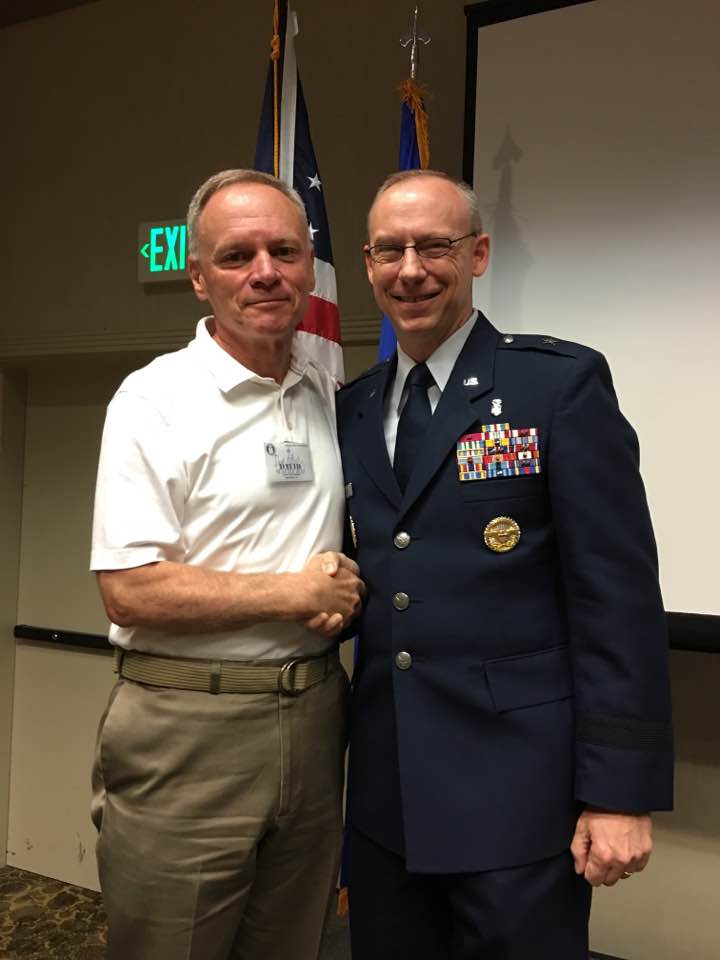
WHAT DOES TRANSFORMATIONAL LEADERSHIP AND PUTTING IT INTO PRACTICE MEAN TO YOU?
Transformational leadership is just leadership. I don’t mean to be dismissive about that. But, leadership is leadership. When we talk about transforming, what I often think is how we deal with the change that’s constantly coming at us and address that.
I gave a presentation to a group of folks in my career field at an Air Force Base in South Dakota. What they asked me to address was change leadership and how do we deal with all this change we’re facing in the Air Force, DOD [Department of Defense] and military health care. I want to be respectful of their question while at the same time also reminding them that leadership is inherently change leadership.
I went back and gave a little bit of a history just to my time in the Air Force, which only goes back to 1992. I said, ‘These are all of the changes that we’ve dealt with successfully over the last three decades. And you’re in a position now where you’re writing the next chapter. If you go back and you connect the dots, there’s nothing static there. We manage the things that are static. We have to lead the things that are changing.”
Things are continuing to change and will continue to change. As a leader, you have to recognize where things are going. Our former Surgeon General of the Air Force, Lt. Gen. Charles Roadman always quoted the great [ice hockey player] Wayne Gretzky, who said, “I skate to where the puck is going to be, not where it has been.”
And so that’s what I believe transformational leadership is about. It’s about that ability to look out a little bit in the future to see where the puck is going. And then to lead yourself, lead others and lead your organization to where that’s going.
Key Takeaways for Leadership Development:
Transformational leadership is the practice by which leaders inspire and empower others to innovate and create change that will positively impact the Fraternity and ultimately the world. The transformational leader first must learn to manage self before being able to lead others and cultivate action within their community and campus. This quarterly series highlights members who are putting transformational leadership into practice. For more information about Sigma Chi’s Transformational Leader program, visit sigmachi.org/transformational-leader.
